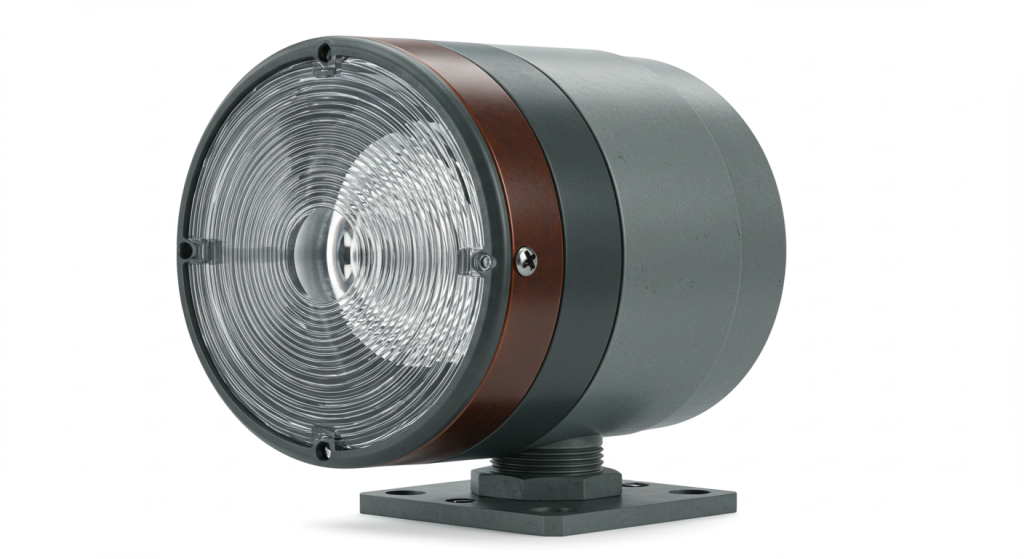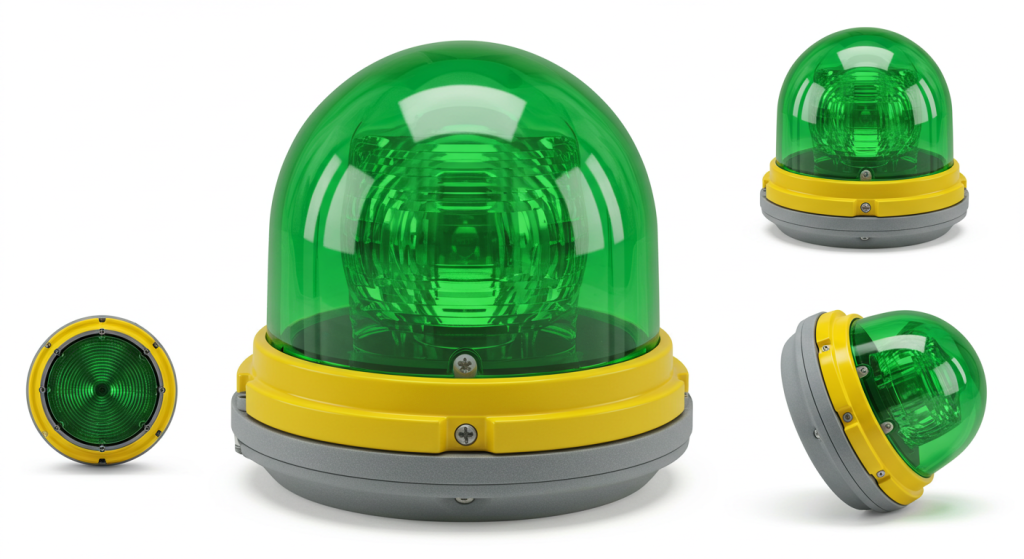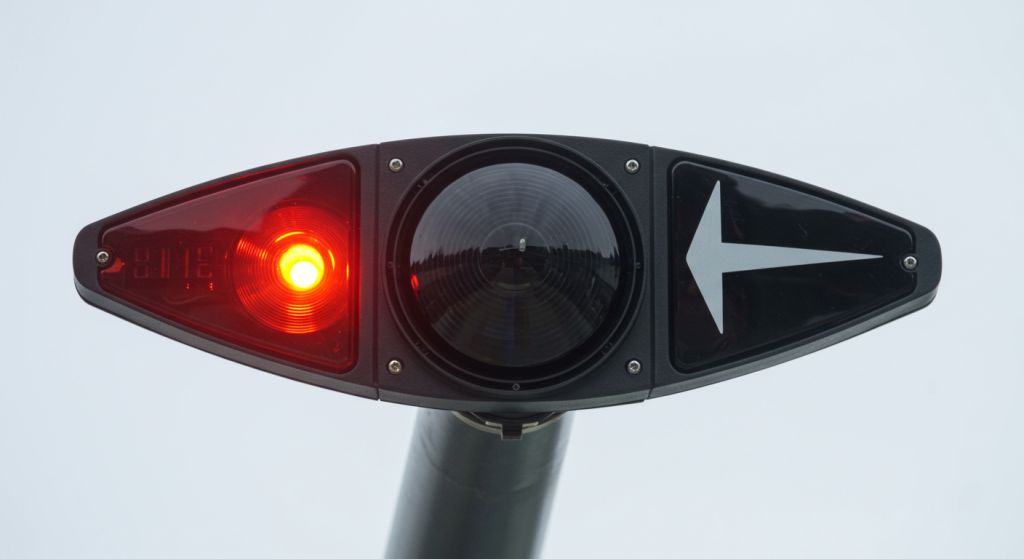Introduction:
Airport runway lights at night play a crucial role in ensuring the safety and efficiency of night-time flights. These lights illuminate the runway, guiding pilots and ensuring smooth landings and take-offs. In this article, we will delve into the various aspects of Airport signal lights at night, including pricing and product details. We will also explore real-life examples to provide a comprehensive understanding of this essential aviation technology.

I. The Importance of Airport Runway Lights at Night
- Safety: Night-time flights are prone to visibility issues, making it essential to have runway lights that provide adequate illumination.
- Efficiency: Well-lit runways reduce the risk of accidents and delays, enhancing overall airport operations.
- Compliance: International aviation regulations require airports to have functional runway lighting systems.
II. Types of Airfield lamps at Night
- PAPI (Precision Approach Path Indicator): These lights are used to guide pilots during the final approach phase, providing visual cues on the runway’s alignment and slope.
- Runway Edge Lights: These lights outline the edges of the runway, ensuring pilots can easily identify the runway boundaries.
- Runway Centerline Lights: These lights run down the center of the runway, aiding pilots in maintaining straight and accurate flight paths.
- Taxiway Lights: These lights guide aircraft on the ground, ensuring safe navigation between runways and terminal buildings.

III. Pricing Factors
- Type of Lighting System: Different types of runway lighting systems have varying costs, with PAPI systems generally being more expensive than basic runway edge and centerline lights.
- Installation and Maintenance: The cost of installation and ongoing maintenance can significantly impact the overall price.
- Customization: Tailoring the lighting system to specific airport requirements can increase the price.
- Brand and Quality: High-quality runway lighting systems from reputable manufacturers tend to be more expensive.
IV. Product Details
- LED Technology: Modern runway lighting systems often use LED technology, which offers energy efficiency, longer lifespan, and reduced maintenance costs.
- Control Systems: Advanced control systems allow for automated operation, ensuring consistent lighting levels and energy savings.
- Integration: Runway lighting systems can be integrated with other airport systems, such as surveillance cameras and weather stations, for enhanced functionality.
V. Real-Life Examples
- Example 1: An international airport in Europe recently upgraded its runway lighting system to LED technology, resulting in significant energy savings and improved lighting quality.
- Example 2: A regional airport in the United States installed a PAPI system to enhance safety and reduce the risk of runway incursions during night-time operations.

I. Components of Airport Runway Lighting Systems
- Runway End Identifier Lights (REILs):
REILs are used to indicate the runway’s location and orientation. They are mounted at the runway threshold and emit a steady beam of light that can be seen from a distance. - Runway Approach Lighting Systems (RALS):
RALS provide pilots with guidance during the approach phase. They consist of a series of lights that are mounted on the runway centerline and edge lights that outline the runway’s boundaries. - Runway Edge Lights:
These lights run along the outer edges of the runway, making it easier for pilots to maintain the correct path during landing and takeoff. - Taxiway Lights:
Taxiway lights guide aircraft on the ground, ensuring they follow the correct paths and avoid obstacles.
II. Functionality and Advancements
- Light Intensity:
The intensity of runway lights is crucial for visibility. Modern lighting systems use high-intensity discharge (HID) lamps, such as metal-halide or LED lights, to provide sufficient illumination. - Color and Visibility:
Runway lights are typically red to ensure they stand out against the night sky. Some systems use color-changing technology to provide additional information, such as the status of the runway or potential hazards. - Energy Efficiency:
LED lighting systems have become increasingly popular due to their energy efficiency and long lifespan. These systems can reduce energy consumption by up to 80% compared to traditional HID lamps.
III. Case Study: A Leading Airport’s Runway Lighting System
To illustrate the practical application of runway lighting systems, let’s consider a major international airport that recently upgraded its runway lighting infrastructure.
- Background:
The airport experienced a significant increase in night-time operations, leading to concerns about the existing runway lighting system’s ability to meet safety standards. - Solution:
The airport decided to invest in a state-of-the-art LED runway lighting system. The new system featured advanced controls, allowing for precise adjustment of light intensity and color. Additionally, the system was designed to be energy-efficient and environmentally friendly. - Results:
Since the installation of the new runway lighting system, the airport has reported improved visibility, reduced maintenance costs, and increased safety during night-time operations.
Understanding the Importance of Airport Runway Lights:
- Safety:
Nighttime operations at airports rely heavily on runway lights to guide pilots and air traffic controllers. These lights provide visibility and help prevent accidents due to poor visibility. - Efficiency:
Effective runway lighting systems enhance the efficiency of airport operations by reducing the time required for takeoff and landing. - Regulatory Compliance:
Airport authorities are required to adhere to strict regulations regarding runway lighting systems. Ensuring compliance is essential for the safe operation of the airport.
Factors to Consider When Purchasing Airport Runway Lights:
- Type of Lighting:
Airport runway lights can be categorized into various types, such as LED, sodium vapor, and halogen lights. Each type has its unique advantages and disadvantages. For instance, LED lights are energy-efficient and have a longer lifespan, while sodium vapor lights offer better visibility. - Installation and Maintenance:
Consider the ease of installation and maintenance of the runway lights. Some lighting systems may require specialized equipment or technical expertise for installation, which can increase the overall cost. - Compliance with International Standards:
Ensure that the purchased runway lights comply with international standards, such as ICAO (International Civil Aviation Organization) and FAA (Federal Aviation Administration) regulations. - Warranty and Technical Support:
Check the warranty period and availability of technical support from the manufacturer. This is crucial in case of any issues or defects with the runway lights.
Case Study: Successful Procurement of Airport Runway Lights
ABC Airport, a mid-sized airport in the United States, recently embarked on a project to upgrade its runway lighting system. The airport faced several challenges during the procurement process, which are outlined below:
- Identifying the Right Supplier:
ABC Airport conducted a thorough market research to identify potential suppliers. They considered factors such as reputation, product quality, and compliance with international standards. - Evaluating Lighting Types:
The airport shortlisted suppliers that offered a variety of lighting types, including LED, sodium vapor, and halogen lights. After extensive evaluation, they chose a supplier specializing in LED lighting due to its energy efficiency and long lifespan. - Ensuring Compliance:
ABC Airport verified that the chosen supplier’s products were in compliance with ICAO and FAA regulations. This helped ensure the safety and efficiency of airport operations. - Technical Support and Warranty:
The supplier provided comprehensive technical support and a five-year warranty for the runway lights. This assurance gave ABC Airport peace of mind regarding the product’s performance and any potential issues.
I. Factors to Consider When Buying Airport Runway Lights
- Type of Lighting:
Airport runway lights come in different types, such as LED, incandescent, and halogen. Each type has its own advantages and disadvantages. For instance, LED lights are energy-efficient, durable, and have a longer lifespan, while incandescent and halogen lights may be more affordable initially but have higher maintenance costs. - Light Intensity:
The intensity of the runway lights is crucial for ensuring visibility during night-time operations. It is essential to choose lights with sufficient intensity to meet the requirements of the airport’s specific runway length and width. - Color and Visibility:
The color of the runway lights should be consistent with international standards to ensure uniformity across different airports. Additionally, the visibility of the lights should be high, allowing pilots to easily identify the runway boundaries and other critical areas. - Installation and Maintenance:
Consider the ease of installation and maintenance when purchasing runway lights. Some lights may require complex installation processes or specialized equipment, which can increase the overall cost and time required for installation.
II. Product Details: Understanding the Features of Airport Runway Lights
- Runway Edge Lights:
These lights are installed along the edges of the runway to mark the boundaries. They come in various lengths and can be mounted on poles or embedded in the runway surface. - Runway Centerline Lights:
These lights are placed in a straight line down the center of the runway to guide pilots during landing and takeoff. They can be mounted on poles or embedded in the runway surface. - Taxiway Lights:
Taxiway lights are used to guide aircraft on the ground. They come in different colors, such as white for taxiways and blue for hold short lines. - Approach Lights:
Approach lights are installed at the end of the runway to provide guidance for pilots during approach. They can be solid or flashing, depending on the specific requirements of the airport.
III. Real-Life Case Studies: Successful Airport Runway Light Installations
- Case Study 1: An International Airport in Europe
An international airport in Europe recently upgraded its runway lighting system by replacing the outdated incandescent lights with energy-efficient LED lights. The new system significantly improved visibility, reduced maintenance costs, and enhanced overall safety. - Case Study 2: A Regional Airport in North America
A regional airport in North America faced challenges with its runway lighting system due to frequent power outages. By installing a solar-powered runway lighting system, the airport ensured continuous operation and reduced its reliance on the main power grid.
I. Overview of Airport Runway Lights at Night
- Importance of Runway Lighting:
Airport runway lights at night are essential for pilots to navigate safely during low visibility conditions. These lights provide critical information about the runway’s dimensions, edges, and obstructions, ensuring smooth and secure landings and take-offs. - Types of Runway Lighting Systems:
a. PAPI (Precision Approach Path Indicator): A series of lights that indicate the aircraft’s glide path during final approach.
b. Runway Edge Lights: Lights that outline the edges of the runway, aiding pilots in maintaining the correct runway centerline.
c. Runway End Identifier Lights (REIL): Lights that identify the runway’s ends, especially during low visibility conditions.
d. Taxiway Lights: Lights that guide aircraft on the ground, ensuring safe navigation between runways and taxiways.
II. Factors Influencing Airport Runway Lights at Night Costs
- Size and Complexity of the Airport:
The cost of runway lighting systems varies depending on the size and complexity of the airport. Larger airports with multiple runways and taxiways require more extensive lighting systems, resulting in higher costs. - Type of Lighting Technology:
LED (Light Emitting Diode) technology has become the preferred choice for airport runway lighting due to its energy efficiency and long lifespan. However, traditional lighting systems, such as high-intensity discharge (HID) lamps, may still be used in some cases, affecting the overall cost. - Installation and Maintenance:
The cost of installing runway lighting systems includes the materials, labor, and equipment required. Maintenance costs, such as bulb replacements and system repairs, also contribute to the overall expenses. - Regulatory Compliance:
Airports must adhere to strict regulatory standards for runway lighting systems. Compliance with these standards may require additional investments in technology and infrastructure, impacting the overall cost.
III. Case Study: A Large International Airport
Consider a large international airport with four runways and a complex taxiway network. The airport recently upgraded its runway lighting system to LED technology, replacing the outdated HID lamps.
- Initial Investment:
The initial investment for the new LED lighting system was approximately $5 million. This included the cost of purchasing and installing the lighting fixtures, as well as the necessary infrastructure upgrades. - Energy Savings:
The airport expects to save approximately $1 million in energy costs over the next 10 years due to the energy-efficient LED technology. This represents a significant reduction in operational expenses. - Maintenance Savings:
LED lighting systems have a longer lifespan than HID lamps, reducing the frequency of bulb replacements and maintenance. The airport anticipates saving an additional $500,000 in maintenance costs over the same period.
- Understanding the Types of Airport Runway Lights:
a. LED Runway Lights: LED lights have become the preferred choice for airports worldwide due to their energy efficiency, long lifespan, and ability to produce high-intensity light. These lights are durable and can withstand harsh weather conditions.
b. Fluorescent Runway Lights: Fluorescent lights are a popular choice for smaller airports. They are cost-effective and provide consistent illumination, but may not match the brightness of LED lights.
c. Incandescent Runway Lights: Incandescent lights are the oldest type of runway lights. They are less energy-efficient and have a shorter lifespan compared to LED and fluorescent lights.
- Key Factors to Consider When Choosing Airport Runway Lights:
a. Intensity: The intensity of the runway lights is crucial for ensuring pilots have sufficient visibility during night-time operations. The International Civil Aviation Organization (ICAO) provides guidelines for minimum light intensity based on runway length and category.
b. Color: Runway lights typically come in green, white, and red colors. Green lights indicate the runway, white lights mark the runway centerline, and red lights indicate the runway threshold.
c. Visibility: Runway lights should be visible from a distance to allow pilots to identify the runway and its boundaries. The visibility of the lights can be affected by factors such as weather conditions and terrain.
d. Durability: Airport runway lights must withstand harsh weather conditions, including rain, snow, and extreme temperatures. Choosing lights made from durable materials, such as stainless steel or aluminum, can ensure long-lasting performance.
e. Energy Efficiency: Energy-efficient runway lights can help reduce operational costs and minimize the environmental impact. LED lights are the most energy-efficient option available.
- Real-World Example:
Consider a major airport that recently upgraded its runway lighting system. The airport decided to switch from incandescent lights to LED lights due to the following reasons:
a. Increased energy efficiency: The new LED lights consume up to 80% less energy than incandescent lights, resulting in significant cost savings for the airport.
b. Enhanced visibility: The brighter and more consistent light produced by the LED lights improved visibility for pilots, reducing the risk of accidents during night-time operations.
c. Long lifespan: The LED lights have a lifespan of up to 50,000 hours, which means less frequent maintenance and replacement costs for the airport.
Conclusion:
Airport runway lights at night are an essential component of modern aviation, ensuring safety and efficiency in night-time operations. Understanding the pricing and product details of these lighting systems is crucial for airports looking to invest in this vital technology. By considering factors such as type, installation, and maintenance, airports can make informed decisions that meet their specific needs and budget constraints.